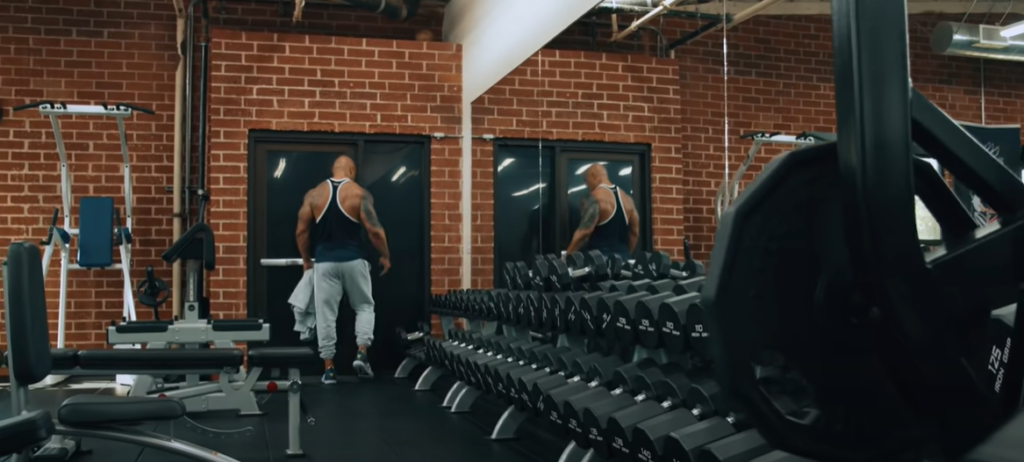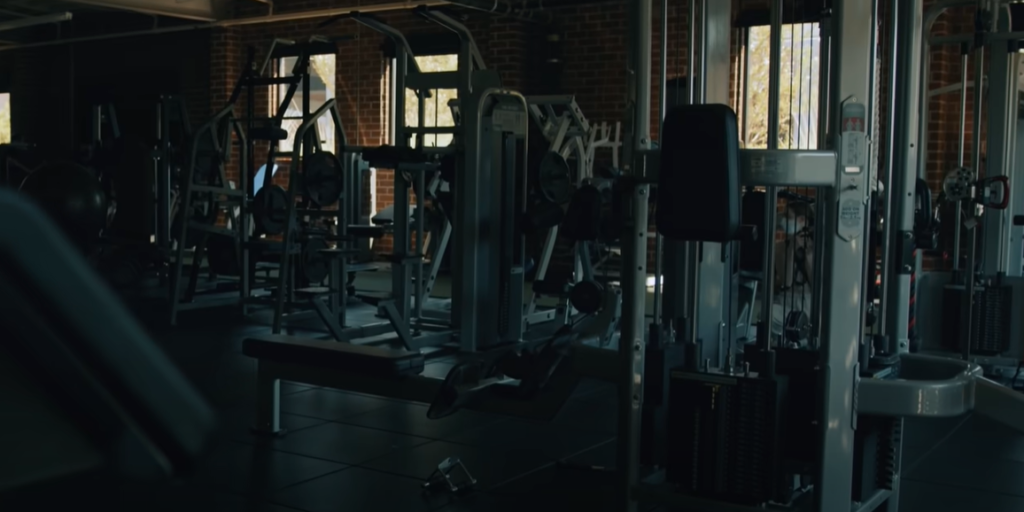If you have ever been in a gym, then you know that barbells can be found in abundance. They come in different sizes and weights, depending on what exercises you’re looking to do. But have you ever wondered just how much a barbell actually weighs? Whether you are an experienced gym-goer or just getting started with strength training, understanding the weight of a barbell can help optimize your workout routine. This blog post will weigh in on everything there is to know about the weight of barbells.
What is a Barbell?
A barbell is a piece of exercise equipment that consists of a metal bar with weights on either end. It is typically used for weight lifting, bodybuilding, and powerlifting exercises. Barbells are also commonly used in CrossFit workouts as part of the functional fitness movement.
The length and weight of a barbell depend on its intended use. For example, Olympic-style barbells tend to be longer and heavier than standard barbells because they are designed for more advanced lifts such as squats, deadlifts, and overhead presses. Barbells can also be loaded up with additional weight plates to increase the resistance level for specific exercises or movements. Additionally, many barbells come with handles or grips for easier handling during certain exercises.
Additionally, barbell workouts are often less expensive than joining a gym or using other forms of exercise equipment. As long as you have access to some weights and a comfortable place to work out, you can get started on your barbell-based strength training program.
No matter your fitness goals, barbells can be a great addition to your workout routine. They are versatile, cost-effective, and offer the potential for big gains in strength and muscle mass. With some focus and dedication, you can get started on your own barbell-based workouts today [1]!

Types of Barbells At the Gym
- Standard Barbell: This is the most common type of barbell and can be used in any exercise. It is usually made of steel and comes in a variety of lengths, weights, knurling patterns, and finishes.
- Olympic Barbell: These are designed specifically for Olympic weightlifting exercises, such as the snatch or clean & jerk. They typically feature a thicker bar shaft with more prominent knurling to help athletes grip the bar better during lifts. The sleeves also rotate on bearings which reduces the amount of friction when lifting heavy weights.
- Trap Bar: A trap bar has two handles at either end that allow you to stand inside it while performing exercises like deadlifts, shrugs, and farmer’s walks. The elevated handles make it easier to keep your back in a neutral position while lifting and can help reduce the strain placed on your lower back.
- Safety Squat Bar: This type of bar has two padded shoulder pads that allow you to perform squats with proper form without putting too much strain on your shoulders or neck. It also features an extended center section so that you can grip the bar more securely when squatting heavy weights.
- Cambered Bar: A cambered bar is bent into a slight arc shape, which allows for a greater range of motion during exercises like deadlifts and lunges. It also reduces the amount of stress placed on your hips, knees, and ankles during the lift.
- Swiss Bar: Similar to a cambered bar, a Swiss bar has multiple gripping points so that you can perform exercises like rows, presses, and curls with an underhand or neutral grip. This type of bar also helps reduce stress on your wrists and elbows during lifts.
- Multipurpose Bars: These bars are designed for performing a variety of exercises such as squats, press-ups, chin-ups, and more. They usually feature several adjustable handles and/or bands which allow you to customize your workouts based on your fitness goals.
- EZ Curl Bar: An EZ curl bar is similar to a standard barbell but features two angled ends instead of one straight end. This angled design helps reduce stress on your wrists and elbows during bicep curls, triceps extensions, and other exercises that involve curling motions.
- Specialty Bars: There are many types of specialty bars available for specific exercises such as landmine presses or Olympic lifts like the snatch or clean & jerk. These bars are designed to help athletes improve their technique by providing a more ergonomic grip and range of motion for these specialized movements.
No matter what type of barbell you use in the gym, it is important to make sure that it is safe and secure before attempting any exercise with it. Make sure to check all parts of the barbell regularly for wear and tear, and tighten the collars when needed to ensure a secure fit. With the right barbell, you’ll be well on your way to making progress in the gym [2]!

How Much Does Each Bar Weigh?
Standard Barbells
Standard barbells typically weigh around 45 pounds (20 kg), although they can range from 33 to 55 pounds (15-25 kg). The most common type is a 7-foot 44-pound (2.1 m, 20 kg) barbell, which is the size and weight often used in powerlifting competitions. Olympic barbells are slightly longer—7.2 feet (2.2 m)—and usually weigh 45 pounds (20 kg). Women’s barbells tend to be lighter and shorter than men’s bars, with weights ranging from 33 to 36 pounds (15-16 kg) and lengths of 6 or 6.5 feet (1.8 – 1.9 m).
Just about any kind of exercise can be done with a standard barbell, including deadlifts, squats, overhead presses, and bench presses. Barbells are also the go-to choice for Olympic weightlifting movements like the snatch and clean and jerk.
Dumbbells
Standard dumbbells usually weigh between 1 to 25 pounds (0.5-11 kg). Some adjustable dumbbell sets offer as much as 50 or even 100 pounds (22 – 45 kg) per set. As with barbells, women’s dumbbells tend to be lighter than men’s — ranging from 1 to 10 pounds (0.45 – 4.5 kg)—and they may come in shorter lengths that make them easier to handle.
Dumbbells are great for a wide range of exercises, including rows, lateral raises, bicep curls, triceps extensions, and squats. They’re also perfect for performing single-arm or unilateral exercises like one-arm rows and lunges. Additionally, dumbbells can be used for functional training movements like med ball slams and burpees.
Kettlebells
Most kettlebells weigh between 8 to 44 pounds (3.6 – 20 kg). You may find some kettlebell sets that offer up to 70 pounds (32 kg) per set. There are also lighter versions available — starting at 1 pound (0.45 kg) and going up to 5 pounds (2.3 kg).
Kettlebells are great for a wide range of exercises, including squats, swings, and snatches. They can also be used to perform functional training movements like Turkish get-ups and farmer’s carries, as well as traditional exercises like bicep curls and triceps extensions. Kettlebells are especially popular for HIIT workouts due to their versatility and the fact that they’re easy to move around quickly.

Women’s Barbells
Women’s barbells tend to be lighter and shorter than men’s bars, with weights ranging from 33 to 36 pounds (15-16 kg) and lengths of 6 or 6.5 feet (1.8 – 1.9 m). Women’s barbells are popular for use in CrossFit workouts, as they provide a good amount of weight without being overly heavy. They can also be used for traditional exercises like squats, bench presses, deadlifts, and overhead presses.
Trap or Hex Bar
Trap or hex bars are typically used for deadlifts and shrugs because they allow lifters to pull the weight from a more natural position — standing inside the barbell instead of behind it. These bars usually weigh between 20 to 50 pounds (9-23 kg). The most common size is a 7-foot 35-pound (2.1 m, 16 kg) hex bar, although you can find some with shorter lengths and heavier weights as well.
EZ Curl Bar
The EZ curl bar is a type of barbell designed specifically for performing arm exercises like bicep curls and triceps extensions. It has angled grooves on the ends that make it easier to grip, which helps reduce strain on the wrists and elbows. These bars usually weigh between 13 to 30 pounds (6-14 kg) and range from 36 to 48 inches (91 – 122 cm) in length.
Triceps Bar
Triceps bars are shorter than standard barbells and have two angled handles that make it easier to perform triceps exercises like press-downs and extensions. They usually range from 5 to 7 feet (1.5 – 2.1 m) in length and weigh between 10 to 20 pounds (4.5-9 kg).
Safety Squat Bar
Safety squat bars, also known as yoke bars, are specially designed for squats and other lower-body exercises. These bars have padded shoulders so they can be placed on the back without causing discomfort. They also feature an arched center section that helps reduce strain on the spine during movements like squats and good mornings. Safety squat bars usually range from 6 to 8 feet (1.8 – 2.4 m) in length and weigh between 33 to 66 pounds (15-30 kg).
Swiss or Multi-Grip Bar
Swiss or multi-grip bars are designed for a variety of exercises and feature multiple grip positions that can be used for different types of movements. They usually range from 6 to 7 feet (1.8 – 2.1 m) in length and weigh between 33 to 44 pounds (15-20 kg). Popular exercises include presses, rows, curls, pull-ups, and chin-ups.
Smith Machine Bar
The Smith machine bar is designed for use on a Smith machine rack. It’s usually shorter than a standard bar (usually 5 feet or less) and has grooves that allow it to slide along the rack’s rails. These bars are often used for exercises like presses, squats, rows, and curls. They can also be used for functional training movements like burpees and box jumps.

Cambered Bar
Cambered bars are typically used for bench pressing because they provide a greater range of motion than regular barbells. They have an arched center section which creates a camber in the middle of the bar, allowing lifters to lower the weight further than with a straight barbell. Cambered bars usually range from 5 to 7 feet (1.5 – 2.1 m) in length and weigh between 33 to 44 pounds (15-20 kg) [3].
What About Weight Clips and Locks?
Weight clips and locks are designed to be used in conjunction with weight plates of various sizes. They work by securing the weights onto a barbell, usually through means of a locking mechanism. These tools provide an easy way to add or remove weight from the bar as needed during workouts. Weight clips and locks come in many different sizes, so they can accommodate any standard-size weight plates that you have.
Finally, weight clips and locks are an important part of any gym setup. Not only do they provide a convenient way to add or remove weights from a barbell, but they can also help you ensure that your equipment is secure when you’re not using it. This makes them essential for anyone looking to get the most out of their workout sessions.
What Affects Barbell Weight?
Type of Barbell
The type of barbell you’re using will affect how much weight it can hold. Different types are designed to handle different amounts of weight safely. Olympic barbells, for instance, are designed to be able to handle heavier weights than standard straight bars. Additionally, some specialized bars may have heavier maximum weight limits than others.

Barbell Sleeve Length
Barbell sleeve length also affects the amount of weight a barbell can hold. Typically, the longer the sleeve length, the more weight it can support due to having more space for plates on each side of the bar. Generally speaking, 7-foot Olympic bars are capable of holding up to 500 pounds while 5-foot Olympic bars can usually hold up to 300 pounds.
Plate Design
The design of the plates you’re using can also affect how much weight your barbell can hold. For example, some plates are made with a smaller diameter hole in the center that allows them to fit onto Olympic-style bars but not on standard straight bars. Additionally, certain types of bumper plates, which are designed for use in Olympic lifts, may have higher maximum weight limits than traditional iron or steel plates.
Length of the Barbell
The barbell length is also a factor in determining how much weight it can hold. Generally speaking, the longer the barbell, the more weight it can support. However, this isn’t always the case as some shorter bars may have thicker sleeves that allow for more plate loading on each side. Additionally, certain types of specialty bars such as safety squat bars are designed to support heavier loads than traditional straight bars due to their shape and design.
Material of the Barbell
The material of the barbell can also affect how much weight it can hold. Generally speaking, steel bars are more durable and able to support heavier weights than aluminum or plastic bars. Additionally, some specialty bars such as powerlifting bars may be made from a heavy-duty steel alloy that is designed to support higher maximum weight limits than traditional steel bars.
Diameter of the Barbell
The diameter of the barbell can affect how much weight it can hold. Generally speaking, thicker bars can support more weight than thinner bars due to having more material in their construction. Additionally, Olympic barbells typically have a larger diameter than standard straight bars which allows them to support heavier loads. In summary, the type of barbell, sleeve length, plate design, length of the barbell, and the material will all affect how much weight a barbell can hold safely. Additionally, consider the diameter of the bar when selecting one for your workouts as this will determine how much weight it can safely handle.
Knurling
The knurling of the barbell can also affect how much weight it can hold. Knurling refers to the cross-hatched grooves in the bar that provide extra grip and help keep your hands from slipping during heavy lifts. Generally speaking, a higher-quality bar with deeper knurling will have better gripping power and be able to support heavier weights than one with shallow or no knurling at all. Additionally, different bars may have different types of knurling such as standard or Olympic-style which may further influence their ability to handle heavier loads. Therefore, choose a barbell with deep knurling if you plan on lifting heavy weights.

Collars
Finally, the collars (also known as clamps) used to secure the plates onto the barbell can affect how much weight it can hold. Generally speaking, higher-quality collars with larger gripping surfaces will be able to securely hold more weight than cheaper ones with smaller gripping areas. Additionally, Olympic barbells typically have larger diameter sleeves and require bigger collars to fit properly. Therefore, using high-quality collars that are designed for your type of barbell will ensure that it can handle heavier weights safely and securely [4].
Different Types of Weight Plates
Weight plates come in a variety of shapes, sizes, and materials. Generally, the two most common types are standard iron plates and bumper plates.
Bumper plates are made from rubber or urethane and designed for Olympic lifting exercises like the clean & jerk, snatch, or back squat. Bumper plates often come in 10-pound (4kg), 15-pound (6.8kg), 25-pound (11kg), and 45-pound (20kg) weights, with a large center hole to fit on Olympic bars. They are usually more expensive than standard iron plates because of their durable construction and ability to absorb shock from dropping them on the floor or rack.
The newest type of weight plate is an adjustable plate, which allows you to change the weight by adding or removing small metal discs inside the plate. This can be a convenient way to adjust your weights for different exercises without having to buy multiple sets of plates.
The last type of weight plate is a competition plate. These plates are calibrated to be very precise in terms of total weight and evenness, making them perfect for Olympic-level competitions. Calibrated iron discs come in 5-pound (2kg) increments from 5 pounds (2 kg) up to 45 or 50 pounds (20 or 22 kg). Competition plates may also have different colors so that competitors can tell which weights they are using at a glance.
Regardless of which type you choose, make sure you have a safe spot to store your weights when not in use. Also, always use a spotter when lifting heavy weights, and never lift more than you’re comfortable with.
FAQ
Are barbells 20 or 25 kg?
The weight of a barbell can vary depending on the type and material used. Generally, Olympic barbells are either 20 kg (44 lbs) or 25 kg (55 lbs). Standard barbells usually weigh 15 to 20 kg (33-44 lbs), while junior barbells usually weigh 5 to 10 kg (11-22 lbs). Deciding which weight is right for you depends on your goals and the exercises you plan to perform with it. If you’re new to strength training, you may want to start with a lighter barbell and gradually increase your weight as your strength improves.
Are there any safety precautions I should take when using a barbell?
Yes! When using a barbell, it’s important to take certain safety precautions. Always set the weight of your barbell so that you can control it during exercises. Make sure you are using proper form and technique when performing exercises with a barbell, as improper form can lead to serious injuries. Additionally, always use spotters when lifting heavy weights. This helps protect you in case anything goes wrong and also serves as an extra layer of motivation to help keep you safe while exercising. Finally, never try to lift a weight that is too heavy for your current strength level – start light and gradually increase the weight over time as your strength improves!
Useful Video: DO COMMERCIAL BARBELLS ACTUALLY WEIGH 20KG?
Conclusion
Barbells at the gym can weigh as little as 5 lbs or as much as several hundred. Despite the wide range of options, a barbell will remain a staple in any gym-goer’s routine. Whether you’re a beginner just starting with the basics or an experienced lifter pushing for heavier weight, there is something to be gained by incorporating barbells into your strength training routine. Barbells offer versatility, convenience, and even portability when paired with adjustable dumbbell plates. As long as you use them safely and properly, barbells can help you reach your fitness goals faster and more efficiently than ever before. With such a wide variety of available weights, everyone from beginners to experts can benefit from using barbells at their local gym.
References:
- https://www.wise-geek.com/what-is-a-barbell.htm
- https://strengthambassadors.com/blog/9-weight-lifting-bar-types-and-when-to-use-them/
- https://www.shape.com/fitness/gear/equipment/how-much-does-the-bar-weigh
- https://torokhtiy.com/blogs/guides/how-much-does-a-barbell-weigh










Leave a Review